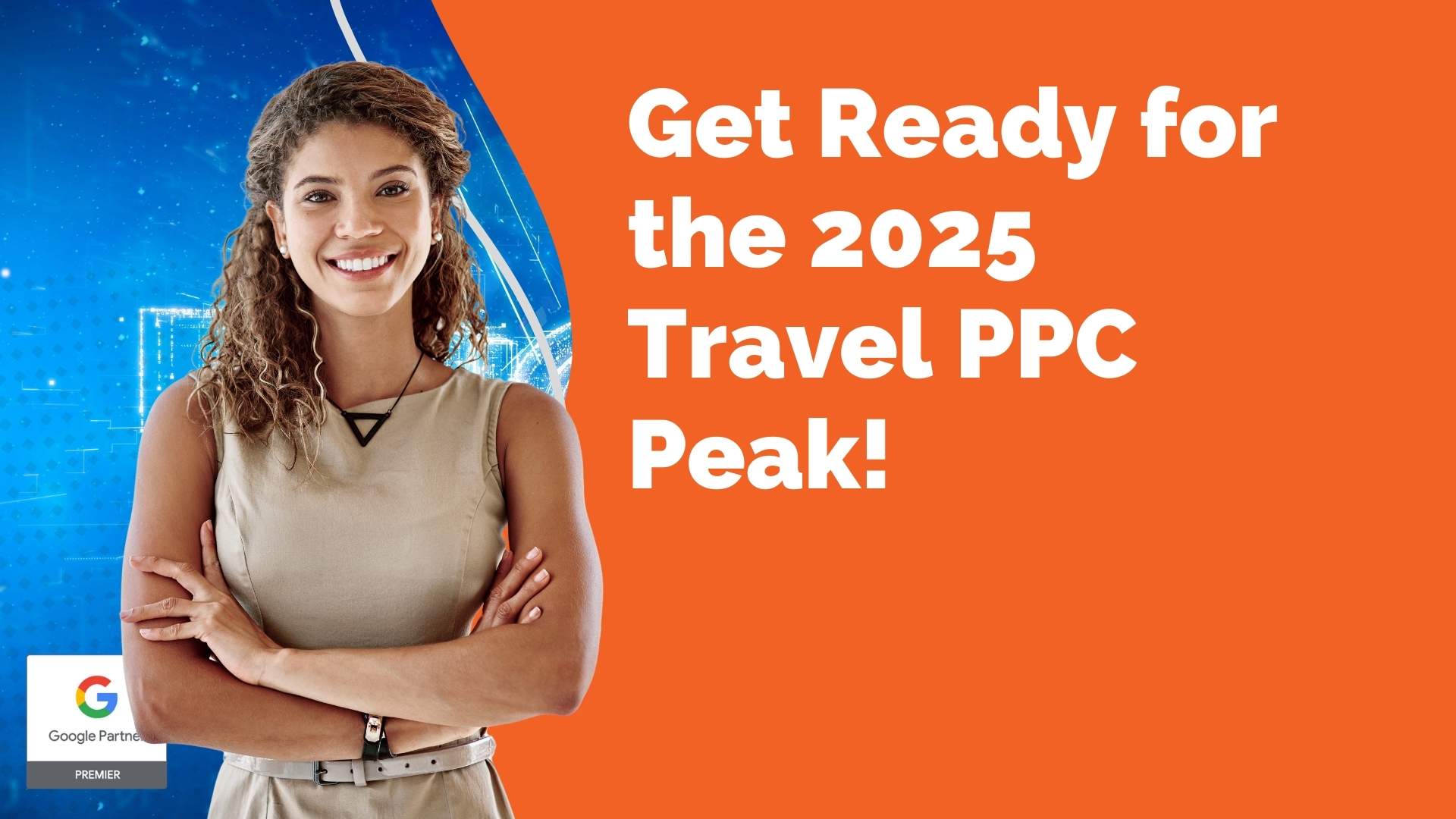About the Author
Alex is Founder & Strategic Advisor at UnitedAds, a leading digital marketing agency specializing in PPC Management.
With nearly two decades of industry experience, he has become a recognized authority in creating high-impact Google Ads campaigns that drive business growth.
Under his leadership, UnitedAds has built a strong reputation for delivering data-driven strategies that maximize ad performance and improve online visibility. Alex’s expertise lies in leveraging the full potential of PPC to help businesses scale efficiently and achieve sustainable success in the competitive digital marketing landscape.
Get ready for the 2025 travel peak!
The travel industry is expected to continue its strong rebound in the coming year. To capitalize on this surge in travel demand, businesses need to understand the latest trends and optimise their strategies accordingly. Here’s what you need to know:
Key Trends Shaping Travel PPC in 2025
Early Bookings Remain Crucial: The trend of booking holidays further in advance is likely to continue. Research shows that in 2023, the average booking window for winter travel rose to 61 days, up from 55 days in 2019. This underscores the importance of engaging travellers early in their decision-making process by showcasing appealing offers and providing comprehensive information that instils confidence in booking. Businesses should adapt their marketing campaigns to target travellers well ahead of their intended travel dates.
Accommodation and Cruises Will Continue to Thrive: Demand for accommodation, particularly vacation rentals, and cruises shows no signs of slowing down. In fact, accommodation searches have demonstrated the most robust growth since 2019, while cruises are experiencing a notable resurgence in popularity. This presents a prime opportunity for businesses in these sectors to invest in marketing efforts that highlight their unique offerings and appeal to eager travellers.
Winter Sun Destinations Will Stay Popular: Beach and sun holidays remain a top choice for travellers, especially during the winter months. Data suggests that 38% of travellers opt for beach and sun destinations for their winter holidays. This signifies a valuable market for travel companies to tap into by showcasing alluring destinations, offering attractive packages, and highlighting experiences that cater to sun-seeking travellers.
Northern Europeans Will Continue Spending on Travel: Northern European travellers are expected to maintain their high spending on travel, offering a valuable market for travel businesses. Research indicates that two-thirds of Europeans are planning trips in the next six months, and Northern Europeans are not demonstrating the budgetary concerns observed in Southern Europe. Travel businesses should tailor their marketing strategies to appeal to this high-spending demographic by focusing on their preferred destinations and highlighting experiences that align with their travel aspirations.
3 Strategic Recommendations for 2025
- Agility is Key: The travel landscape can change quickly. Businesses must remain adaptable and responsive to shifting demand patterns, adjusting targets and budgets as needed. This includes closely monitoring travel trends, analyzing real-time data from tools like the Travel Analytics Centre, and being prepared to adjust marketing campaigns and offers to align with evolving traveller preferences.
- Early Engagement is Essential: Capturing the attention of travellers in the initial research phase is paramount. Provide compelling information that helps them make informed decisions. By understanding the types of information travellers seek—such as destination details, accommodation options, and unique experiences—businesses can create targeted content that addresses their needs and captures their interest early on.
- Inspiration Drives Action: Become a consistent source of travel inspiration to foster wanderlust and encourage bookings. Utilise visually rich content, particularly video, to engage your audience. By leveraging platforms like YouTube Shorts, businesses can showcase the beauty and excitement of travel destinations, tap into the power of short-form video content, and inspire potential travellers to take the next step in their booking journey.
Leveraging Google’s Tools for Success
Performance Max: Harness the power of AI with Performance Max to optimise your campaigns across the entire customer journey. Performance Max for travel goals offers tailored features for hotel suppliers, such as AI-populated creatives that save time and effort, expanded reach through Hotel Ads to target specific properties and attract potential guests, and per-property reporting to gain granular insights into performance and make data-driven decisions.
Broad Match with Smart Bidding: Reach a wider audience of potential travellers by using broad match keywords. This approach allows businesses to cover a larger range of relevant search queries and capture demand from travellers who may be using a variety of search terms. Smart Bidding leverages machine learning to automate bid adjustments and optimise for conversions or conversion value, ensuring efficient budget allocation and maximising return on investment.
Travel Analytics Centre: Gain valuable real-time insights into travel trends, demand patterns, and your brand’s performance with this comprehensive tool. It allows businesses to identify trending destinations, understand booking windows and length of stay preferences, and analyse brand performance across different regions. These insights can inform marketing strategies, budget allocation, and campaign targeting, ensuring businesses are well-equipped to capitalize on emerging opportunities and adapt to changing market dynamics.
Essential Best Practices for Travel PPC 2025
- Optimise Your Campaign Structure: Structure your campaigns effectively by grouping destinations, hotels or themes based on profitability and create asset groups to target specific audiences. This enables businesses to tailor their messaging and offers to different traveller segments, ensuring relevance and increasing the likelihood of conversion. For example, a campaign targeting luxury travellers could be structured around high-end destinations and hotels, while a campaign for budget-conscious travellers might focus on affordable options and value-driven messaging.
- Elevate Your Creative Assets: Utilise high-quality videos and images to capture attention and drive engagement. This includes incorporating a variety of video assets, including those longer than 10 seconds and those with voiceovers, to cater to different viewing preferences. Additionally, businesses should experiment with different aspect ratios and refresh their videos regularly to avoid creative fatigue and maintain viewer interest.
- Utilise Audience Signals Strategically: If you have data suggesting certain audiences are more likely to convert, use audience signals to guide your campaigns. This allows businesses to inform Google’s algorithms about the types of audiences that are most likely to be interested in their offerings, leading to more targeted ad delivery and increased conversion rates. However, it’s important to ensure that audience signals are based on reliable data and insights, and to avoid adding irrelevant or overly broad audiences that could dilute campaign effectiveness.
- Prioritise Brand Safety: Implement brand safety measures at the account level to protect your brand’s reputation. This involves utilizing placement, keyword, and brand list exclusions to prevent ads from appearing alongside content that is inappropriate, offensive, or misaligned with brand values. By proactively managing brand safety, businesses can ensure that their advertising efforts contribute to a positive brand image and avoid potential reputational damage.
- Monitor and Adapt: Closely track your campaign performance and make adjustments based on real-time data. This includes monitoring key metrics like CPA, ROAS, CVR, and conversions, as well as leveraging tools like the Recommendations tab in Google Ads to identify areas for improvement and optimize campaign settings. By staying vigilant and responsive to performance data, businesses can ensure that their campaigns are delivering optimal results and adapt their strategies as needed to achieve their marketing goals.
Summary
By understanding these key trends, implementing a proactive strategy, and harnessing the power of Google’s tools, travel businesses can position themselves for success in the exciting year of travel ahead.
Remember, staying ahead of the curve and anticipating traveller needs will be crucial to winning in 2025. While the source material focuses on 2024, these points, drawing on expert recommendations, are likely to hold true for 2025 as well. You may want to do your own research to confirm these insights.







